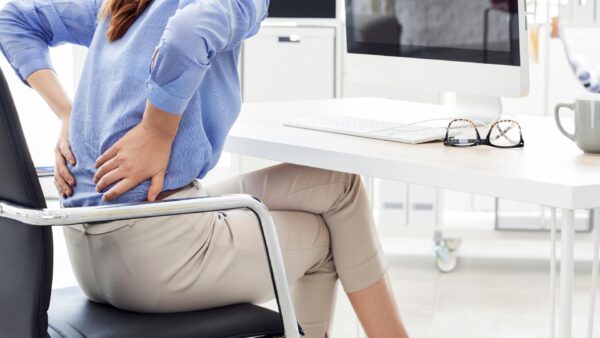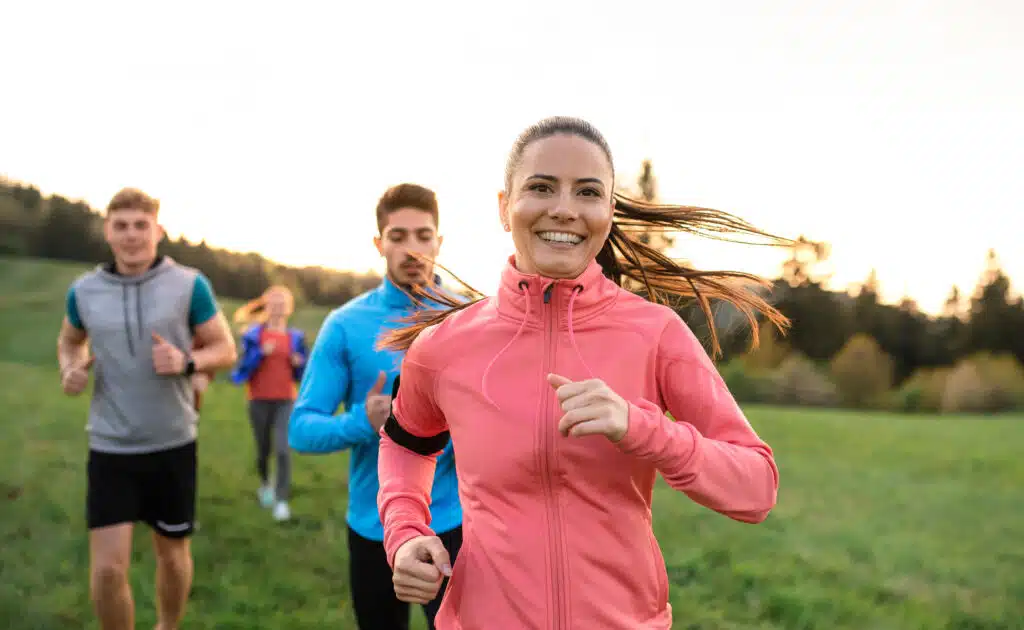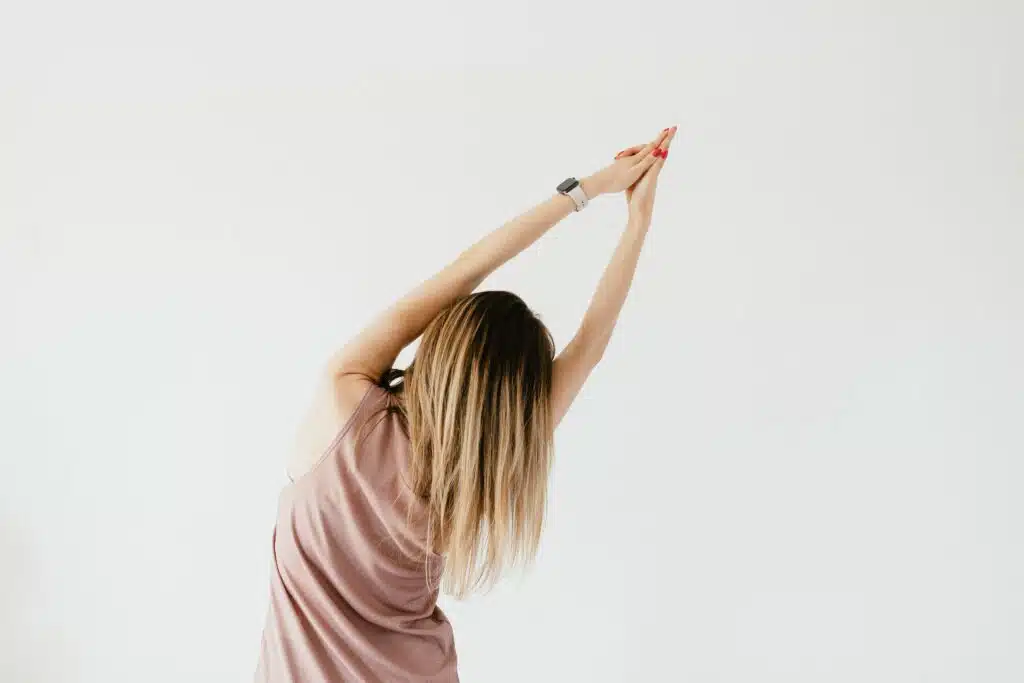In today’s world, where many of us spend a significant portion of the day sitting—whether in the office, working from home, or at school—the concept of an “active break” is gaining increasing importance. But what does this term really mean, and why should we pay more attention to it?
What is an Active Break?
An active break is a short interruption in your daily routine, specifically used for physical activity. It’s not about intense workouts but simple movements that activate the body and refresh the mind.
These could include relaxation exercises like shoulder rolls or stretching, a short walk in the fresh air, light yoga exercises, or energizing games or dance moves.
Why is an Active Break So Important?
The benefits of active breaks are diverse and scientifically proven:
- Improved Concentration: Movement stimulates blood circulation, improving oxygen supply to the brain. The result: better focus and productivity.
- Stress Relief: Physical activity helps reduce stress hormones like cortisol and promotes the release of endorphins—often called “happiness hormones.”
- Prevention of Discomfort: Prolonged sitting can lead to tension, back pain, and other discomforts. Regular movement counteracts these issues.
- Increased Motivation: Small bursts of activity can improve mood and boost motivation for upcoming tasks.
How to Integrate an Active Break into Daily Life
Implementing active breaks is easier than you think. We’ve got a few tips for you.
Create a schedule with fixed time slots for your active breaks, for example, every 60 or 90 minutes. This way, you can plan your day accordingly, and your breaks won’t be overlooked.
To make sure you don’t forget your breaks, it can be a good idea to set reminders using alarms or apps.
Everything is more fun together, so why not invite your colleagues to join your active break? Make it a regular part of your workday, for example, before recurring meetings.
Switch up your exercises regularly and try new ones. This will keep your active break interesting and varied.
Examples of Active Breaks
I like to Move it!
This exercise is about simply moving your body and becoming more aware of it. Stand upright but relaxed in a space where you can stretch both arms in all directions without bumping into anything. Begin moving your body loosely in any way that feels right to you. Pay attention to yourself:
- How do your muscles tense and relax?
- How do your joints move, and how far can they stretch?
- How does your breath flow through your body?
- How do your arms and legs feel? Do they feel lighter or heavier with certain movements?
You can perform this exercise slowly or dynamically, with or without music. If you like, you can synchronize your movements with your breathing or pause between movements for one or two breaths.
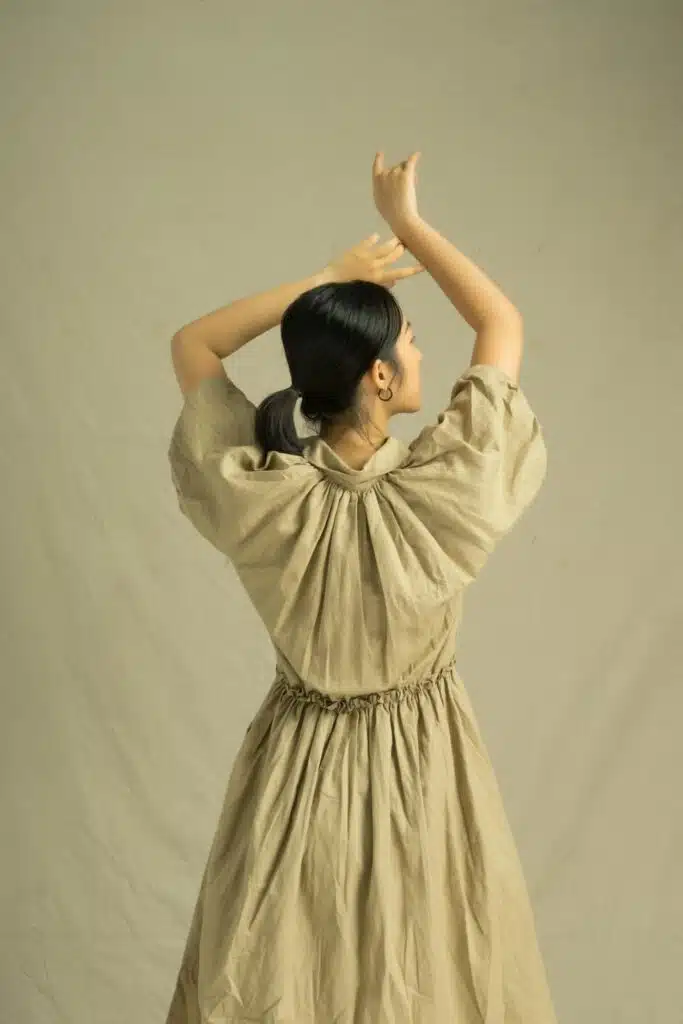
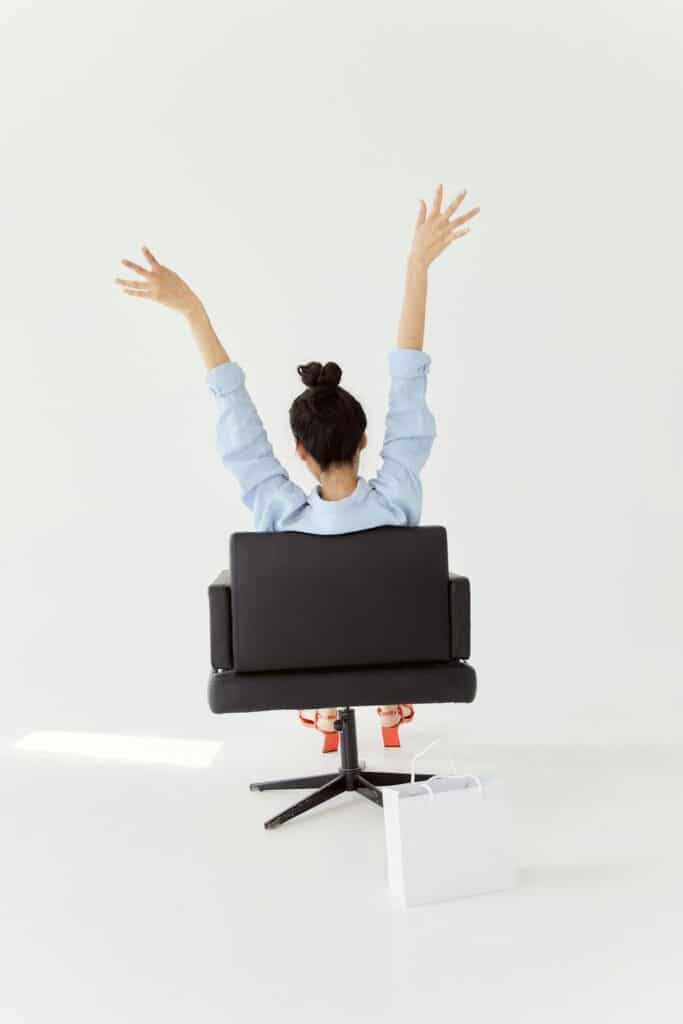
Seated Triathlon
For this active break, sit on a chair and ensure you have some space on all sides. Your goal is to complete a mini-triathlon right at your desk. You can decide how fast you move and how long each stage lasts.
- Running: Lift one leg at a time as if you’re running in place.
- Swimming: Move your arms in the air as if you’re doing breaststroke or freestyle swimming.
- Cycling: Lift both feet off the floor and perform a cycling motion in the air.
At the end, sit back in a relaxed position and celebrate your victory. You’ve just done something simple yet beneficial for your health!
One, Two, Three
This exercise requires a partner and a bit of concentration.
Person A and B stand facing each other and begin counting alternately from one to three. A starts with “One,” B says “Two,” A says “Three,” and B starts again with “One.”
After a few rounds, one person introduces a movement to replace “One.” “Two” and “Three” are still spoken aloud, but “One” is replaced with the movement. After a few rounds, replace “Two” with another movement, and eventually “Three” as well.
For an extra challenge, you can perform this exercise in a larger group, taking turns to count and move.

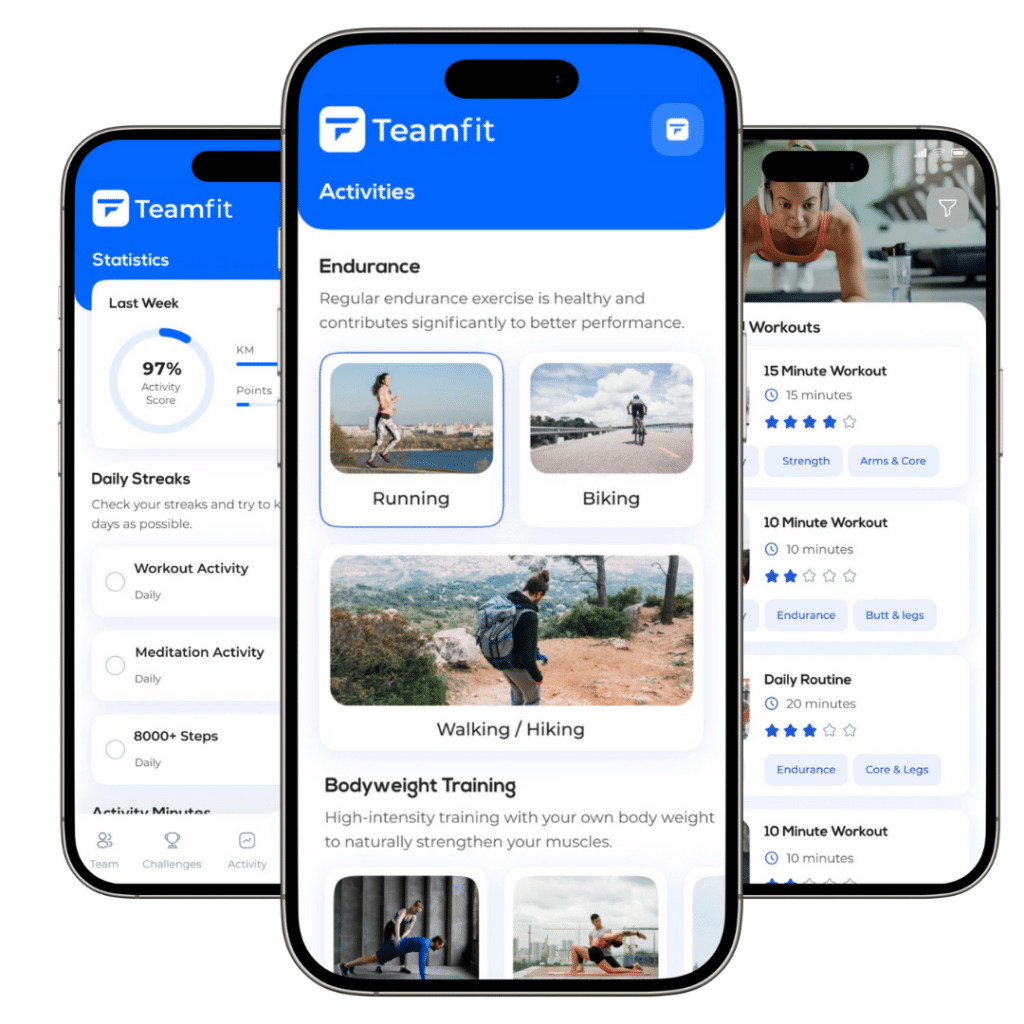
Using Mini-Workouts from Teamfit as Active Breaks
Teamfit has lots of opportunities for you to stay active – check it out!
In the activities section, under the category Bodyweight Training, you’ll find the Movement Snacks tile. There, you’ll discover many small exercises lasting between 15 seconds and 2 minutes that can be done anywhere.
If you want to move for a few more minutes, you’ll find options like Body Zone Workouts, the training generator, or pre-made workouts. These start at 5 minutes and up; for longer workouts, sportswear is recommended.
Conclusion
Active breaks are a simple yet effective way to make your daily routine healthier and more productive. They require little time but offer tremendous benefits for both body and mind. Give it a try—your body and mind will thank you!
Back Health & Movement Snacks
Almost everyone is familiar with the discomfort: back pain. Long periods of sitting, lack of movement, and stress are among the most common triggers. Therefore, it’s crucial to take care of your back daily. In this post, we have tips on how you can easily incorporate simple movements and movement snacks into your routine to avoid pain and tension. Here you can find another exciting article on the topic of back health.
WHO guidelines on physical activity
In 2022 the World Health Organization (WHO) published the “Global status report on physical activity 2022”. The facts and findings in there are very interesting and important – also for your health. In this article you will learn why physical activity is so important, which health advantages it brings along and how you can be more active in daily life.
Movement Snacks – short but effective motion breaks
Are you sitting down right now? Probably you do, because we spend a lot of our time sitting. Unfortunately this behavior can lead to various ailments. Luckily, you can prevent them easily with short but effective movement snacks.
Find out why prevention is important and how you can reduce your risk of illness in just 5 minutes.

